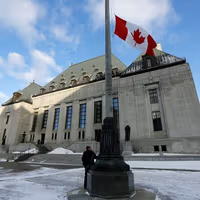Chamber of Commerce: Iranian Healthcare Industry Faces Stark Future
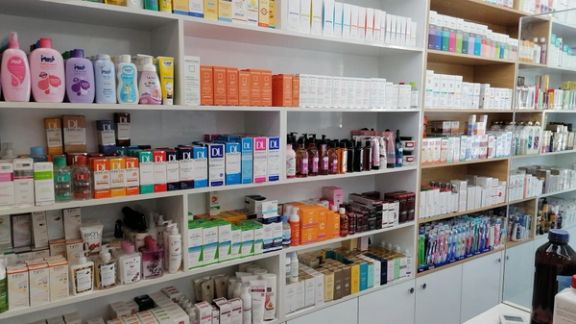
The head of Iran’s Health Economics Commission has warned about the state of the healthcare industry amid price hikes and lack of suitable infrastructure.

The head of Iran’s Health Economics Commission has warned about the state of the healthcare industry amid price hikes and lack of suitable infrastructure.
Mohammad Abdollahzadeh, head of the Health Economics Commission in the Tehran Chamber of Commerce revealed that the deteriorating state of Iran's pharmaceutical sector is worse than energy and electricity.
His remarks come following reports from Alborz Daroo and Toolid Daroo, prominent pharmaceutical companies, who have recently increased the prices of some medicines. The companies say that price hikes are due to increased costs for raw material.
Abdollahzadeh also highlighted the fact that Iran’s medical industry is operating with antiquated infrastructure, which is hindering the basic ability of production units. "Given the current circumstances, these production units are finding themselves without the means to acquire essential machinery," he said.
Citing data from pharmaceutical companies listed on the stock exchange, Abdollahzadeh said that since 2019, the depreciation rate within Iran's pharmaceutical sector has surpassed the rate of investment, posing significant challenges to sustainability and growth.
While Iranian authorities frequently link medicine shortages to US sanctions, Washington asserts that humanitarian assistance remains exempt from these sanctions. Iran annually imports medicines valued at more than $1.5 billion, with significant quantities originating from Europe, China, and India.
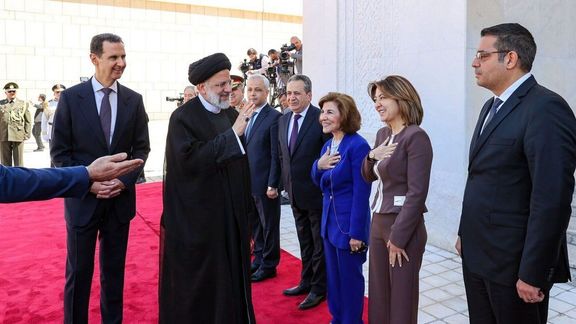
The release of Iran’s $6 billion frozen funds from South Korea has prompted a website in Tehran to ask: What about over $30 billion owed by the Syrian regime?
Aftab News, a website relatively independent of the current rulers and said to be close to other regime insiders, argued in an article published Thursday, that the outlook for Syria to pay Iran back looks bleak. Iran has a small share of Syria’s trade, roughly one-tenth of what Turkey exports to the country. Annual Iranian exports are less than $1.5 billion.
Both Iran and its ally, the government of Bashar al-Assad in Syria face serious economic challenges. Iran’s finances have steadily deteriorated since 2018 when the United States imposed sanctions after withdrawing from the JCPOA nuclear accord. Syria has remained in political limbo, insecurity, with various military groups roaming in the country and its other ally Russia weakened by its invasion of Ukraine.
United Nations envoy for Syria sounded the alarm to a worsening economic situation on Wednesday. “Prices are now spiraling out of control for essential goods such as food, medicine, fuel, basic commodities. Every part of Syria, every community, is affected,” said Geir O. Pedersen, adding many are struggling to put food on the table and feed their families.
As it usually happens, a man who is broke remembers what others owe him. So, the story goes for the Islamic Republic that aligned itself with Assad in 2011 as antiregime protests flared in the country. The clerical regime seeing its close ties with Assad as essential for its regional plans, supported Damascus with loans, free oil and tens of thousands of Iranian, Afghan, Lebanese, Iraqi and other fighters.
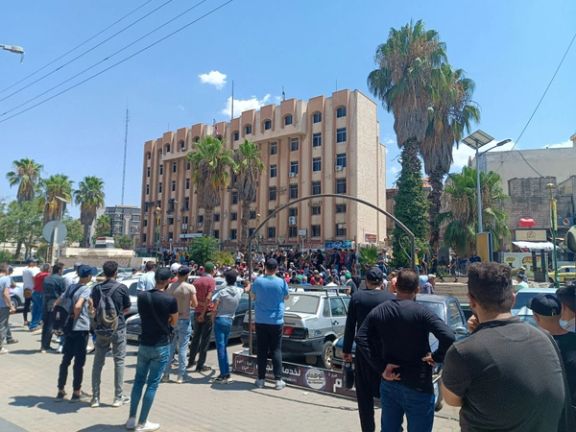
Now, when Iran suffers from a serious economic crisis some people in Tehran realize that they have spent tens of billions of dollars in Syria – a significant part of their restricted oil revenues – for a dubious outcome.
Estimates range from $30 billion to more than $50 billion material aid provided to the Assad regime. Tehran’s oil revenues in this period averaged from below $20 billion to above $40 billion annually. Therefore, it is safe to estimate that from 2011-2022 oil revenues hardly totaled $400 billion. If Iran spent $50 billion in Syria, that would be more than 10 percent of its total income from oil.
The $50 billion figure was revealed in May when an opposition hactivist group accessed government information. Minutes from a meeting of Iran’s Supreme National Security Council showed that Syria’s debt goes back to a long-term agreement signed between the two countries in January 2019, under former president Hassan Rouhani. However, the debt has been building for much longer, with roughly $11bn worth of oil given to Damascus from 2012 to 2021.
A combination of aid in the form of military support and cash, the total amount of debt to Iran is estimated to be about $50 billion, though the document said the final amount is still being calculated.
Aftab News listed an array of potentially profitable industries in Syria that Iran is interested to take under its control as compensation for money the Assad regime owes, but so far there has been no movement toward an agreement. A visit by President Ebrahim Raisi to Damascus in early May did not produce any breakthrough.
Among objects of interest to Iran are Syrian oil fields, new power stations, port facilities and mines. But Aftab News said that these need investments to become profitable, money that Iran does not have.
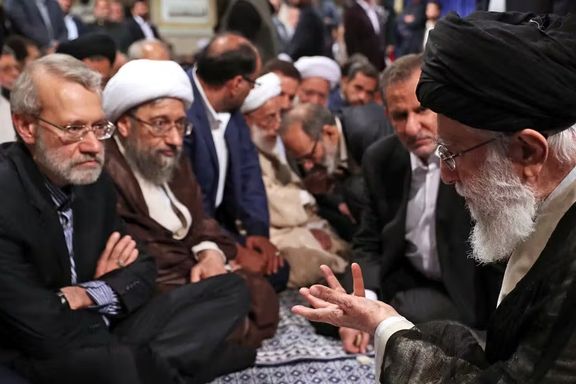
A veteran regime politician in Iran, who could potentially challenge the hardliners’ control over the Iranian parliament has grown increasingly vocal in recent days.
Former Parliamentary Speaker Ali Larijani has been making controversial comments about state affairs, primarily through a couple of interviews with online media sources or in meetings with entrepreneurs in Iran during the past few days.
Hardline daily Khorasan explained Larijani’s behavior as a signal to indicate that he is willing to play a part in the upcoming parliamentary elections although it is clear that he is not a candidate for the March 2024 polls.
Khorasan wrote that Larijani ignored the Interior Ministry’s call for pre-registration, a process that is not part of the formal procedure for announcing one’s candidacy. However, he told likeminded politicians to register their candidacy and run for the parliament.
The daily, which is affiliated to the administration of the holy shrine of Imam Reza in Mashhad and is funded by Khamenei’s office, opined that Larijani will support the candidacy of several moderate conservative politicians and former lawmakers such as his brother-in-law Ali Motahari, as well as others including Mansoor Haqiqatpoor and Ezattollah Yousefian Molla.
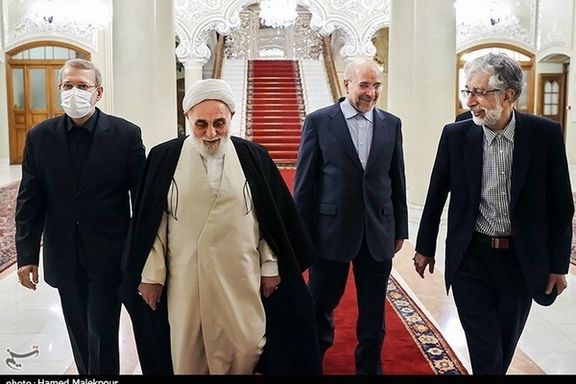
As per Rouydad24, Larijani has recently criticized Iran’s foreign policy by saying that these gentlemen [presumably Iran’s top diplomats, or Supreme Leader Ali Khamenei who determines the country’s foreign policy] think it is important to have influence in some foreign capitals. However, he emphasized that our paramount objective should be to ensure our citizens lead stable lives and can chart their future with confidence.
Meanwhile, he cautioned the government against embracing the Marxist notion that nations are merely workers requiring governance by the authorities.
Highlighting that liberalism surpasses Marxism as a governing approach, offering citizens an abundance of choices in various scenarios, Larijani noted the presence of a third path – the Islamic approach. In this path, the government facilitates the populace's productive endeavors, an approach he described as empowering the people. According to him, this strategy holds the potential to propel the nation's progress.
Clearly criticizing Khamenei without naming him, Larijani said: "It is not enough to say where we want to be in 20 years. We need to have a reasonable development plan."
Meanwhile, in a meeting with a group of entrepreneurs over the weekend , Larijani said: "Some politicians define social justice as giving cash handouts to the people. But the main responsibility of the government is bringing about sustainable development." He was clearly referring to populist politicians such as President Ebrahim Raisi and his predecessor Mahmoud Ahmadinejad, who in the absence of satisfactory economic growth offer small monthly cash payments to all or part of the citizens.
Larijani added that sustainable development also ensures better outcomes for economic, social, political and security issues of the country.
Larijani who started his political career in early 1990s as a hardliner coming from the ranks of the revolutionary guards (IRGC), gradually changed into a moderate conservative politician during the past decade, and aligned his political affiliation with politicians such as former President Hassan Rouhani.
In another development, Aftab News quoted Larijani as saying that "Some people have mistaken political power with the use of force."
According to Aftab News, criticizing the government's harsh treatment of artists with a lifestyle different from what hardliners propagate, Larijani said: "What do artists want? They want a [normal] life and the freedom for artistic creation. The government needs to reach a common understanding with Iranian artists."

As Russia and Iran are both hit by economic sanctions from the West, the allied nations have entered discussions about the prospect of military cooperation.
Russia’s deputy defense minister and the Iranian ground forces commander were in talks this week during an Iranian military delegation's visit to Moscow, Interfax reports.
Since the Russian invasion of Ukraine 18 months ago, the two nations have drawn closer in diplomatic and military exchanges, which has caused concern in the West.
In August 2022, Iran’s supply of lethal drones to Russia sparked international interest and alarm. And the alleged transfer of drones from Iran to Russia for use against Ukraine triggered further concern. In July, US National Security Advisor Jake Sullivan issued a caution about Russia's apparent pursuit of acquiring Unmanned Aerial Vehicles (UAVs) from Iran.
The situation has escalated as Moscow and Tehran reportedly collaborated on plans to establish a new drone manufacturing facility in Russia. The facility is said to be capable of producing at least 6,000 drones based on Iranian designs but with heightened capabilities and are thought to be intended for use in the ongoing conflict in Ukraine.
According to sources cited by The Wall Street Journal, a high-level Iranian delegation visited Russia in January to assess the prospective site for the factory and to finalize key details necessary to commence the project. These reports claimed that the drone factory initiative is part of a substantial $1 billion agreement between the two allies.
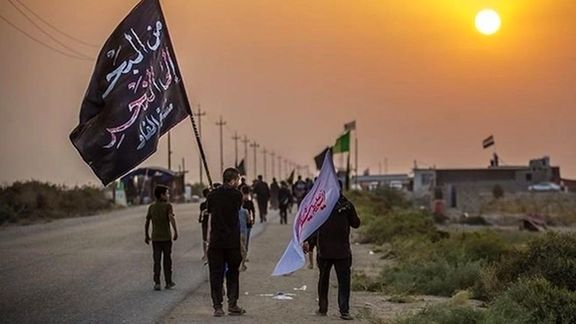
Despite loans, discounted foreign currency and various other incentives, the number of Iranians willing to undertake the Arbaeen Shiite pilgrimage in Iraq is in decline.
The latest statistics from the 'Arbaeen Headquarters' indicate that only 1,335,000 individuals have applied for special passports for the religious ceremony, approximately one-third of the number of participants in the previous year.
Arbaeen (literally meaning fortieth) is a Shiite religious observance that occurs forty days after the Day of Ashura, when according to religious legend Husayn (Hussain) ibn Ali, the grandson of Prophet Muhammad was killed on the 10th day of the month of Muharram in 680 AD.
The number of pilgrims will increase as there are about two weeks until the Arbaeen ceremony, which falls on September 6 this year, but even if the country keeps issuing passports with its maximum capacity, the number will end up significantly lower than previous years.
Brig. Gen. Mohammad Sharafi, a police commander in charge of the Arbaeen Headquarters, said Tuesday, “We received approximately 1,335,000 applications for passports, and so far, 640,000 passports have been delivered. We are currently printing 100,000 passports daily after tripling our capacity.”
The Islamic Republic regime views the event as a show of influence in the region, encouraging high participation via numerous perks, including providing free medical services and rest stops along the way, free internet on the road and inside Iraq, offering interest-free loans and granting 200,000 Iraqi dinars ($153) to pilgrim as well as special passports with less bureaucratic requirements. The ration of cheap foreign currency – which used to be dollars or euros until this year – will be paid from Iran's frozen funds in Iraq, about to be released as part of a prisoner swap deal with the United States.

Millions of Shiite Muslims travel to the Iraqi city of Karbala, the site of the Shiite Imam’s shrine for Arbaeen. A large number of the pilgrims start their journey from other religious cities – such as Najaf and Kadhimiya in Iraq -- and walk on foot for days – sometimes hundreds of kilometers -- to reach Karbala. There are no reliable methods for tallying the number of visitors to Iraqi holy Shia sites during Arbaeen. In 2019, before the pandemic, an estimated 15 million people from various countries attended the ceremonies.
The route from Najaf to Karbala is the most popular one and the Islamic Republic has set up dozens of stations providing free food and refreshments as well as rest areas on the way.
Aref Norouzi, a senior official at the Execution of Imam Khomeini's Order’ (Setad), claims that the "largest and most well-equipped mobile hospital in the Middle East" will be established by the organization along the route from Najaf to Karbala.
Despite reports of shortages of medicines and medical staff in a lot of regions across the country, the regime has dispatched 22,000 medical personnel and emergency responders for the event. At least seven field hospitals have been set up and two helicopter ambulances and more than 100 regular ambulances have been stationed just at the Khosravi border crossing, one of several main crossings between Iran and Iraq.
More than 4,000 physicians, along with approximately 400 tons of medication and equipment, are prepared for Arbaeen pilgrims, Iran’s Red Crescent Society said.
According to Iran’s Customs Administration, more than 30,500 tons of foodstuffs and 800,000 liters of gasoline are to be transferred to Iraq for Arbaeen. This comes as Iran is struggling to supply its daily needs of fuel that has led to long lines of cars at gas stations and a gasoline black market. Providing food is also among the grievances of Iranian households as the prices jumped in the past year.
In addition to medical and healthcare personnel, municipal, road maintenance, and transportation workers have also been deployed, including only 4,000 Tehran municipality employees.
Majid Mirahmadi, a deputy interior minister and the head of Iran's taskforce for Arbaeen pilgrimage, had predicted that this year more than four million Iranian pilgrims will travel to Iraq. The figure is a speculation based on the number of pilgrims in the previous years but this year the annual Shiite mourning ceremonies took an unprecedented anti-regime tone as people chanted religious verses that were critical of the regime and its repressive actions.
Despite government efforts to mitigate economic and other challenges faced by pilgrims it appears that people are becoming more distant from the pilgrimage due to its association with the Islamic Republic and its policies.

Iran’s Defense Minister Mohammadreza Ashtiani says the ministry is willing to enter the automobile manufacturing sector, should the president require it.
Ashtiani’s remarks come after President Ebrahim Raisi underlined the importance of automobiles during the Defense Capability Exhibition. In response, Ashtiani said that if called upon, the ministry is ready to engage in the automotive field.
During a TV program interview, Ashtiani elaborated on the country's defense advances and outlined the responsibilities of the Ministry of Defense. While primarily charged with equipping and arming the armed forces, he explained that the ministry also performs secondary missions. Ashtiani also praised the Navy of the Islamic Revolutionary Guard Corps for projecting “authority in encounters with foreign vessels” in the Persian Gulf.
Iran’s military might was further displayed on Tuesday when it unveiled a new drone, the Mohajer-10, with enhanced capabilities and increased flight duration
Official statements from Iranian media revealed that the homemade UAV (unmanned aerial vehicle), has an operational range of 2,000 km and can fly for up to 24 hours.
Reports indicate that the drone is equipped to carry missiles, bombs, and hand grenades. It is also outfitted with electronic warfare and reconnaissance systems.
Rising tensions in the region continue to draw global attention. Iran's attempt to seize two commercial vessels in early July was met with a resolute response from the United States, prompting Iran to withdraw, as confirmed by the Pentagon. Over the past two years, Tehran has reportedly harassed or seized more than 15 commercial ships in the broader Persian Gulf region.

